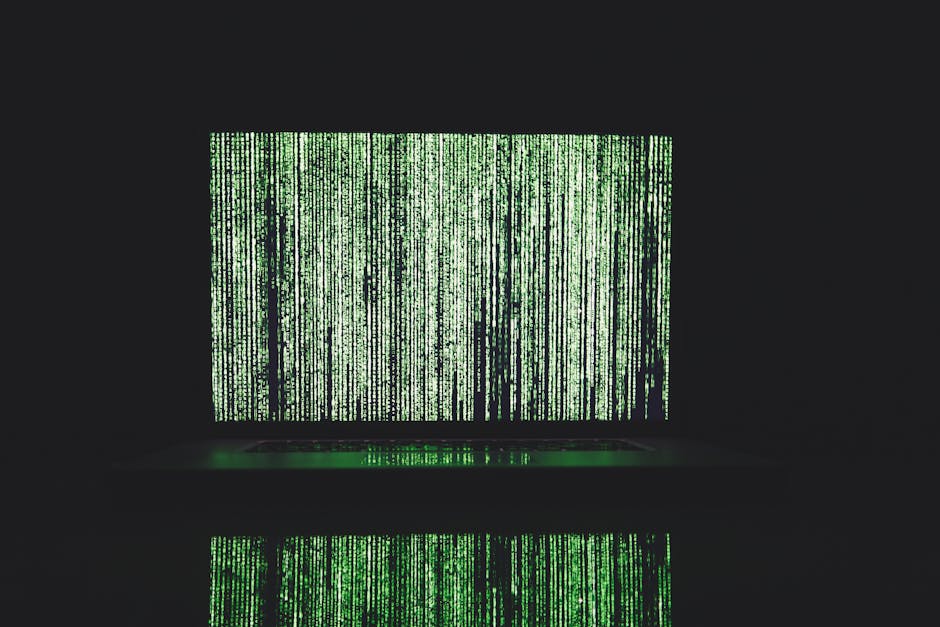The Future of Cybersecurity: Trends and Predictions
Get ready to face off against cybercriminals in a digital battleground where AI-driven threats, quantum computing‘s encryption-busting capabilities, and IoT vulnerabilities are rewriting the rules of cybersecurity. You’re about to enter a world where quantum computers can crack current encryption methods faster than before and AI-driven threats use machine learning to evade detection. But don’t worry, cryptographers are working on quantum-resistant algorithms and autonomous response systems are being developed to counter AI-driven threats. Buckle up, because as you navigate this complex landscape, you’ll discover even more surprises waiting for you around the corner.
Key Takeaways
• Quantum computers will necessitate the adoption of quantum-resistant algorithms to safeguard against encryption cracking.• AI-driven countermeasures are crucial to combat AI-driven threats that evade detection and exploit vulnerabilities.• IoT security must prioritise device authentication and network segmentation to prevent cyber attacks in 5G networks.• Educating users about social engineering tactics and promoting proactive cybersecurity measures can mitigate the human element’s vulnerability.• Proactive risk assessment, threat hunting, and anticipatory defences are essential to stay ahead of cybercriminals in the evolving cybersecurity landscape.
Quantum Computing’s Encryption Impact

As you prep for the impending quantum computing revolution, get ready to kiss your trusty encryption methods goodby, because the quantum computers of tomorrow will be able to crack them faster than you can say ‘cybersecurity breach‘.
Yeah, it’s time to bid adieu to those encryption algorithms you’ve grown to luv and trust. The quantum computers of the future will be able to hack into even the most secure systems, making quantum hacking a very real and looming threat.
But don’t panic just yet! This doesn’t mean we’re doomed to a future of rampant cybercrime. It simply means that cryptography needs to evolve – and fast.
The good news is that cryptographers are already on it, working tirelessly to develop new, quantum-resistant algorithms that can withstand the might of quantum computers. It’s an arms race, and the clock is ticking.
The evolution of cryptography is vital in the face of quantum computing’s encryption-busting capabilities. This isn’t a drill, folks!
It’s time to get ahead of the game and start adopting new, quantum-resistant encryption methods. Otherwise, you’ll be stuck in the Stone Age of cybersecurity, wondering how your supposedly ‘unhackable’ system got breached.
Stay ahead of the curve, and get ready to join the quantum-resistant revolution. The future of cybersecurity depends on it.
AI-Driven Threats and Countermeasures

You’re about to enter a cyber battlefield where the enemy is smarter, faster, and more relentless than ever – and it’s not a human. Welcome to the world of AI-driven threats, where the bad guys are leveraging artificial intelligence to launch sophisticated attacks that’ll leave even the most seasoned security pros scratching their heads.
Adversarial AI is the new breed of cybercriminal, using machine learning algorithms to evade detection and exploit vulnerabilities at an unprecedented scale. They’re like the Terminator, minus the awkward one-liners. These AI-powered attacks can adapt, learn, and evolve in real-time, making them nearly impossible to anticipate.
But don’t panic just yet! The good news is that Autonomous Response systems are being developed to counter these AI-driven threats. Imagine having an AI-powered sentry that can detect, respond, and neutralise threats in milliseconds – faster than you can say ‘cybersecurity ninja.’ These Autonomous Response systems can analyse vast amounts of data, identify patterns, and take proactive measures to prevent attacks before they even happen.
In this cat-and-mouse game of cyber warfare, it’s vital to stay one step ahead of the bad guys. By embracing AI-driven countermeasures, you can turn the tables on Adversarial AI and reclaim the upper hand in the cyber battlefield. So, gear up and get ready to join the fight against AI-driven threats – the future of cybersecurity is counting on it!
IoT Security in a 5G World

Your smart home devices, which were supposed to make life easier, are now vulnerable to cyber attacks, thanks to the 5G network that’s supposed to make them even smarter. You’re basically inviting hackers to the party, and they’re bringing their A-game.
The increased connectivity and speed of 5G have opened up a whole new world of possibilities for IoT devices, but also for cybercriminals.
The problem is, most IoT devices lack robust security measures, making them an easy target.
Device Authentication is a solution – it’s like giving your devices a unique ID to verify only authorised devices can connect to the network. It’s a no-brainer, but somehow, many devices still don’t have it.
And don’t even get me started on Network Segmentation – it’s like separating your devices into different groups, so if one gets hacked, the others aren’t compromised. It’s essential, yet vital.
The fact is, 5G has created a Wild West scenario, where everyone’s trying to stake their claim, but security is an afterthought.
It’s time to wake up and smell the coffee – IoT security isn’t just about devices, it’s about your personal data, your privacy, and your safety. So, buckle up, because in this 5G world, IoT security isn’t just a concern, it’s a necessity.
Human Element in Cyber Defence

While 5G and IoT get all the flashy headlines, it’s the humans behind the screens who are often the weakest link in the cybersecurity chain, making it imperative to acknowledge the critical role the human element plays in cyber defence.
You, yes you, are the most vulnerable part of your company’s cybersecurity infrastructure. Sorry, it’s not the fancy AI-powered firewall or the sleek new router – it’s you.
Social engineering tactics prey on your psychological vulnerabilities, manipulating you into clicking on that suspicious link or divulging sensitive info. You’re the one who might accidentally download malware or fall for a phishing scam. And let’s be real, who hasn’t reused passwords or clicked ‘agree’ without reading the terms?
It’s not that you’re careless; it’s just that cybercriminals are masters of exploitation.
The truth is, cybersecurity is as much about understanding user behaviour as it’s about deploying fancy tech. Your online habits, your clicks, and your decisions all contribute to the cybersecurity landscape.
So, what can you do? Be aware of your online actions, educate yourself on social engineering tactics, and for the luv of all things digital, use unique, complex passwords!
Cybersecurity’s Shift to Proactive

As you’re busy trying not to be the weakest link in your company’s cybersecurity chain, the cybersecurity landscape is shifting gears to get one step ahead of cybercriminals.
Gone are the days of reactive cybersecurity, where you’d wait for an attack to happen and then scramble to respond. Today, the focus is on proactive measures to anticipate and prevent threats before they even materialise.
You’re no longer just playing defence; you’re on the offence. Risk assessment is key to identifying vulnerabilities and prioritising your defences. It’s like doing a pre-emptive strike on your own systems to find the weaknesses before the bad guys do.
And when you think you’ve got it all covered, that’s when the real fun begins – threat hunting. It’s like a game of cyber-cat and mouse, where you’re constantly on the lookout for signs of suspicious activity, trying to outsmart the attackers before they strike.
This shift to proactive cybersecurity is a game-changer. It’s no longer about reacting to threats; it’s about anticipating them. You’re taking control, being proactive, and staying one step ahead of the cybercriminals.
And let’s be real, who doesn’t luv being the hero who saves the day? It’s time to take the reins and own your cybersecurity. The future of cybersecurity is proactive, and you’re leading the charge.
Conclusion
As you gaze into the cybersecurity crystal ball, the future looks like a precarious tightrope walk between innovation and catastrophe.
With quantum computing threatening to shatter encryption, AI-driven threats lurking around every corner, and IoT devices multiplying like rabbits on steroids, it’s a wonder we’re not already drowning in a sea of cyber chaos.
Buckle up, because the future of cybersecurity is about to get a whole lot wilder.
Contact us to discuss our services now!

